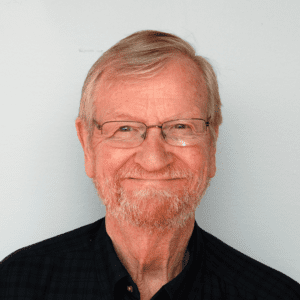
George Hendrey
Distinguished Professor
Climate Change
Science Building, Room E208
Phone: 718-997-3325
George.Hendrey@qc.cuny.edu
Research Interests
Plant responses to CO2 enrichment: Much of what is known about global ecosystem responses to increasing atmospheric CO2 has been gained through Free-Air CO2 Enrichment (FACE) experiments of my design. All FACE experiments tend to underestimate ecosystem net primary production (NPP) that may occur at a particular increased concentration of CO2. This is because of the sensitivity of photosynthesis to rapid and poorly controlled variation in CO2 concentrations that are an inevitable result of the FACE technique. We are working on development of a NPP correction based on photosynthesis experiments in which CO2 is oscillated in a controlled way in a leaf chamber while measuring photosynthetic fluorescence.
Green roofs: A nearly 80% of the energy used to maintain New York City is consumed by space heating and cooling. Green building design, including “green roofs”, may have a number of benefits including improved energy efficiency. We are working on potential applications of green roofs on our campus.
Urban watersheds are very difficult to study from a mass-balance point of view because the hydrologic flows are modified by both exogenous inputs and drainage network outputs that do not conform to topographic watershed boundaries. We are developing a concept of an urban watershed laboratory in which a wide range of environmental variables may be studied, including atmospheric deposition, biogeochemistry, hydrology and the linkage of the watershed to the marine environment.
Teaching Philosophy
Teaching at Queens means providing a learning experience to students who have a wide range of interests and motivations and helping them gain both skills and wisdom needed to achieve their life goals. In the School of Earth and Environmental Science we provide opportunities for students to learn about Earth with its component parts operating as a system. My philosophy is that teaching of earth system science is a means to a larger end, that of learning to think critically. I strive to help students learn to think in a logical and fact-based way, to see that apparently impenetrably complex issues and systems are made of simpler components that can be understood, and to learn that doubt is fundamental to intellectual activity.

